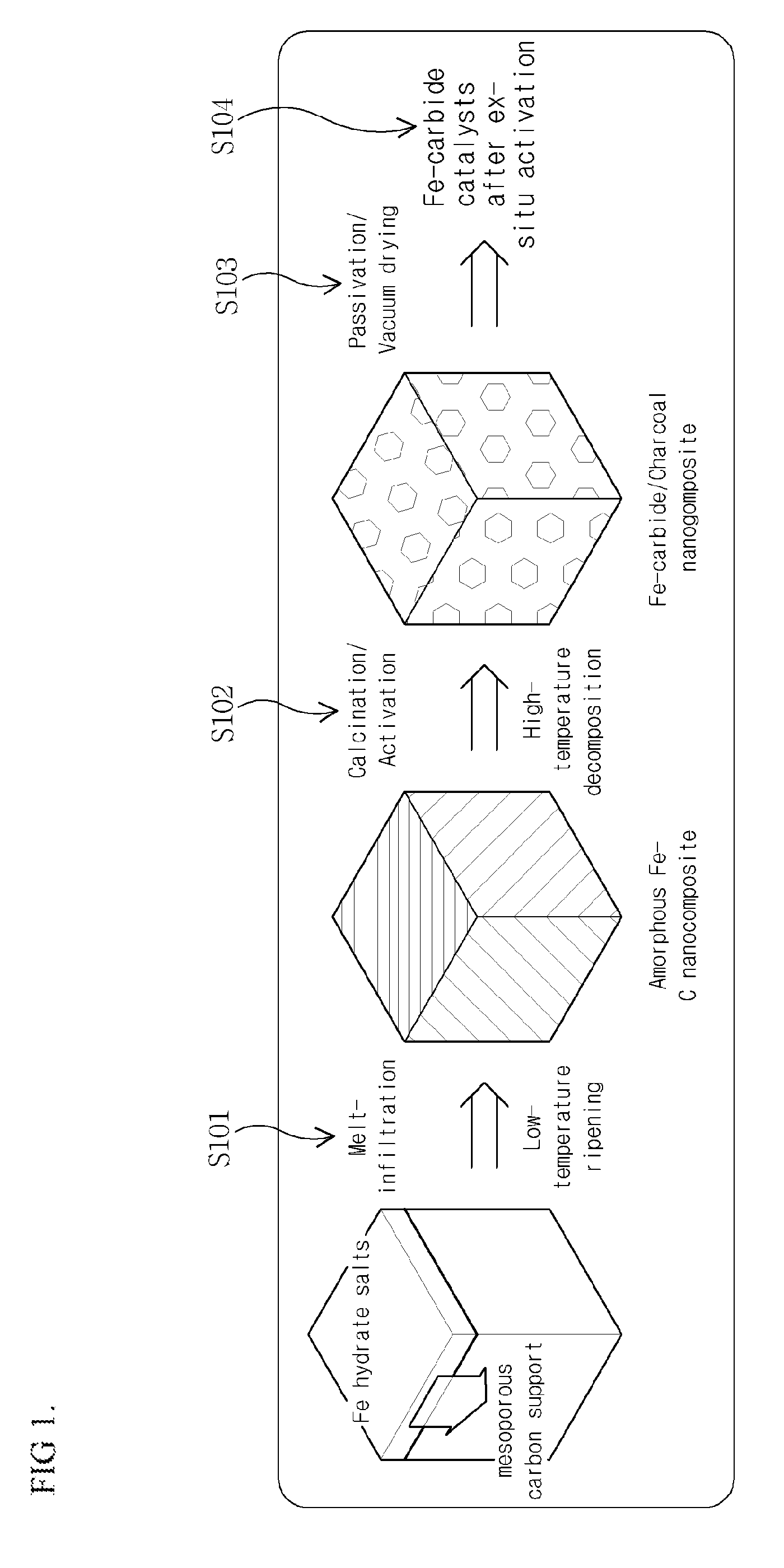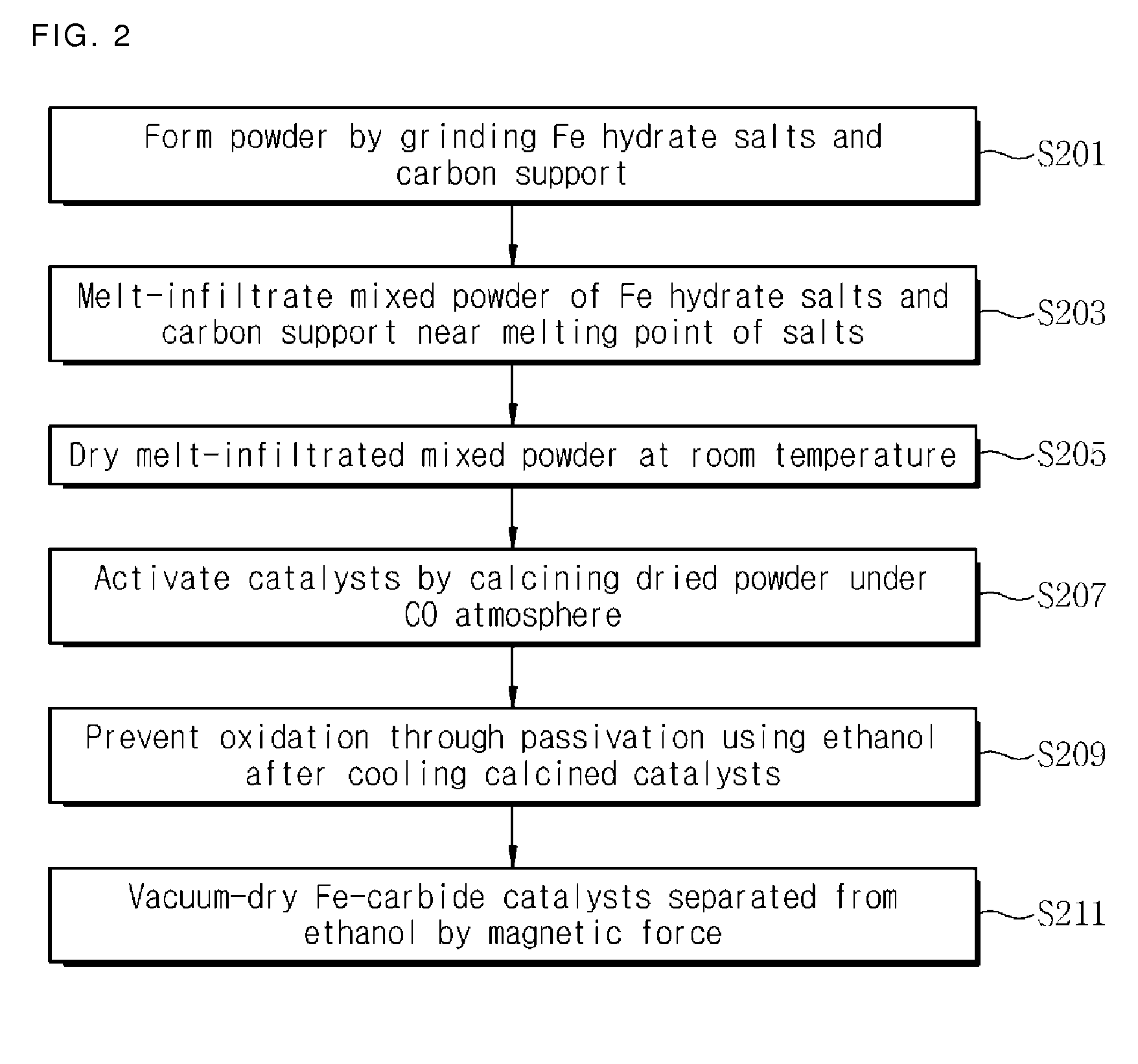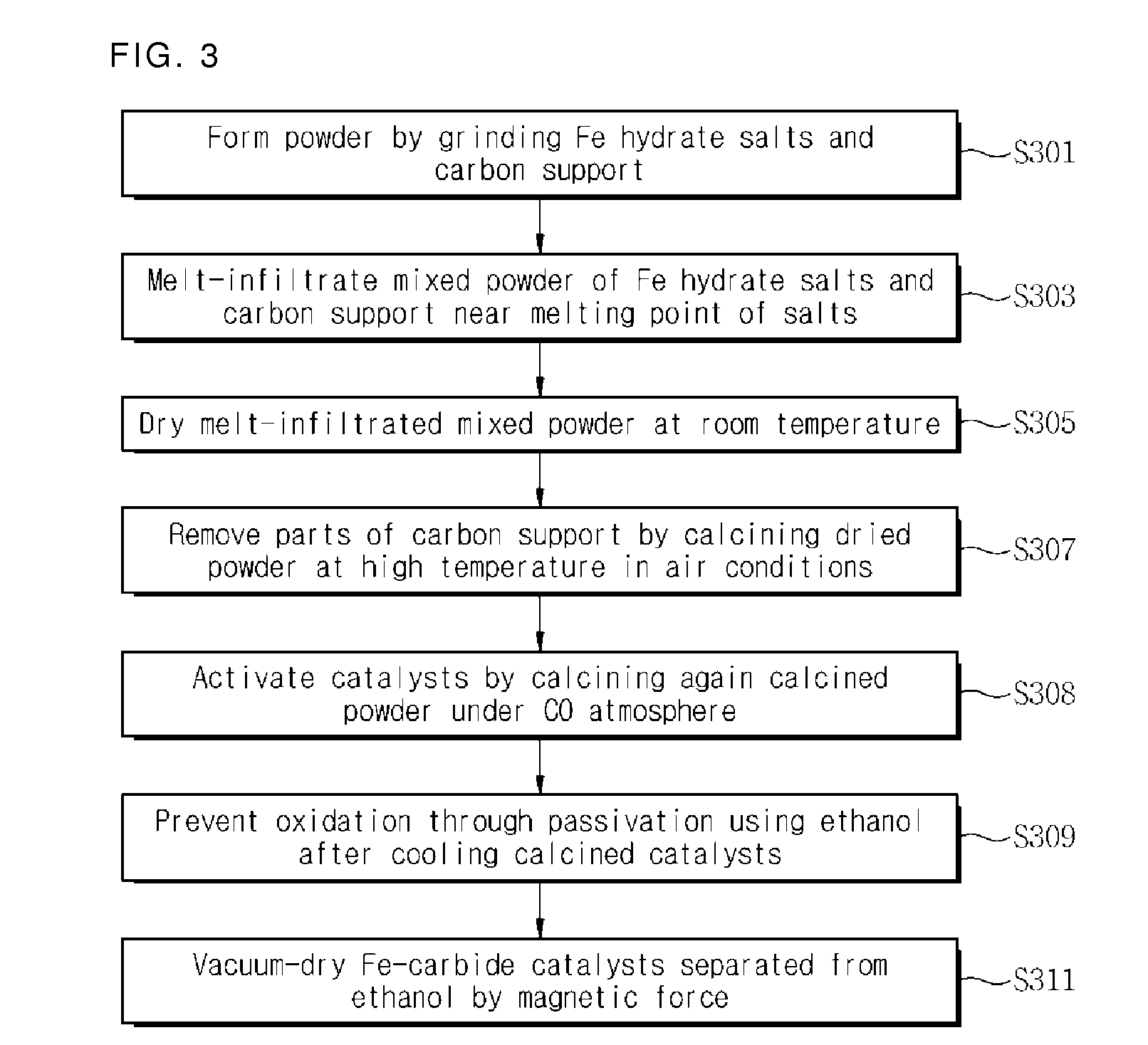Preparation of Iron/Carbon Nanocomposite Catalysts for Fischer-Tropsch Synthesis Reaction and Related Production of Liquid Hydrocarbons
- Summary
- Abstract
- Description
- Claims
- Application Information
AI Technical Summary
Benefits of technology
Problems solved by technology
Method used
Image
Examples
first embodiment
Preparation of Fe / Charcoal Catalysts [S / C=1.8]
[0063]For uniform and high dispersion of hydrated Fe salts into a carbon support, S / C ratio which is defined as the ratio of the amount of salts to that of carbon was selected as 1.8. Specifically, Fe(NO3)39H2O (Aldrich, 98+%, fw=404 g / mol, m.p.=47.2° C.) 57.9 g and activated charcoal (Aldrich, −100 mesh particle size, fw=12.01 g / mol) 32.0 g were placed in a mortar and sufficiently ground using pestle until they become uniform. Then, mixed black powder was put in a polypropylene vessel. The vessel was closed with a stopper and stored in a drying oven with a temperature of 50° C. for 24 hours. After ripening for 24 hours, mixed powder was dried at a room temperature and then ground again uniformly. By performing heat treatment using a calcination oven at 350° C. for 4 hours under a carbon monoxide atmosphere (a normal pressure, a fluid speed of 200 mL / min), iron-carbide (FeCx) / charcoal catalysts was obtained. Since such catalyst powder te...
second embodiment
Preparation of Granule Type Fe / Carbon Catalysts
[0071]When powder type catalysts are used in a scaled-up fixed-bed reactor, reaction may progress unfavorably due to increased pressure-drop. The use of granule having a relatively greater size ranging from hundreds to thousands of micrometers can decrease pressure-drop when reactant flows at a high flow rate. Various types of carbon such as pellet or granule as well as powder can be applied to a support in this invention. The amount of Fe hydrate salts and the amount of a carbon support are the same as in the first embodiment. However, instead of grinding metal salts and a carbon support together using pestle, metal salts may be ground first using pestle. Then the ground salts are mixed with carbon sphere (Pure Sphere Co., diameter 0.35 mm) in a polypropylene vessel and infiltrated. Post processing is the same as in the first embodiment.
third embodiment
Preparation of High-Infiltrated Catalysts
[0072]To obtain catalysts into which iron is highly infiltrated, parts of carbon used as a support may be removed through heat treatment in the air before activation using carbon monoxide after iron hydrate salts are infiltrated in the same process as in the first embodiment. Specifically, by heat-treating dry mixed powder in a calcination oven at 400° C. for 4 hours under an air atmosphere after infiltration for 24 hours, carbon was partially removed and hence Fe2O3 / C catalysts with high-infiltrated Fe were obtained. Thereafter, through activation at 350° C. for 4 hours under a carbon monoxide atmosphere, catalysts with high-infiltrated Fe-carbide particles were obtained. A TEM image in FIG. 12a shows that the size of particles tends to be increased according as carbon is removed. As shown in FIG. 12b, it was observed that activated Fe-carbide particles have a size of about 50 nm and only a part of carbon adheres on the periphery. Also, in I...
PUM
| Property | Measurement | Unit |
|---|---|---|
| Temperature | aaaaa | aaaaa |
| Temperature | aaaaa | aaaaa |
| Time | aaaaa | aaaaa |
Abstract
Description
Claims
Application Information
 Login to View More
Login to View More - R&D
- Intellectual Property
- Life Sciences
- Materials
- Tech Scout
- Unparalleled Data Quality
- Higher Quality Content
- 60% Fewer Hallucinations
Browse by: Latest US Patents, China's latest patents, Technical Efficacy Thesaurus, Application Domain, Technology Topic, Popular Technical Reports.
© 2025 PatSnap. All rights reserved.Legal|Privacy policy|Modern Slavery Act Transparency Statement|Sitemap|About US| Contact US: help@patsnap.com



